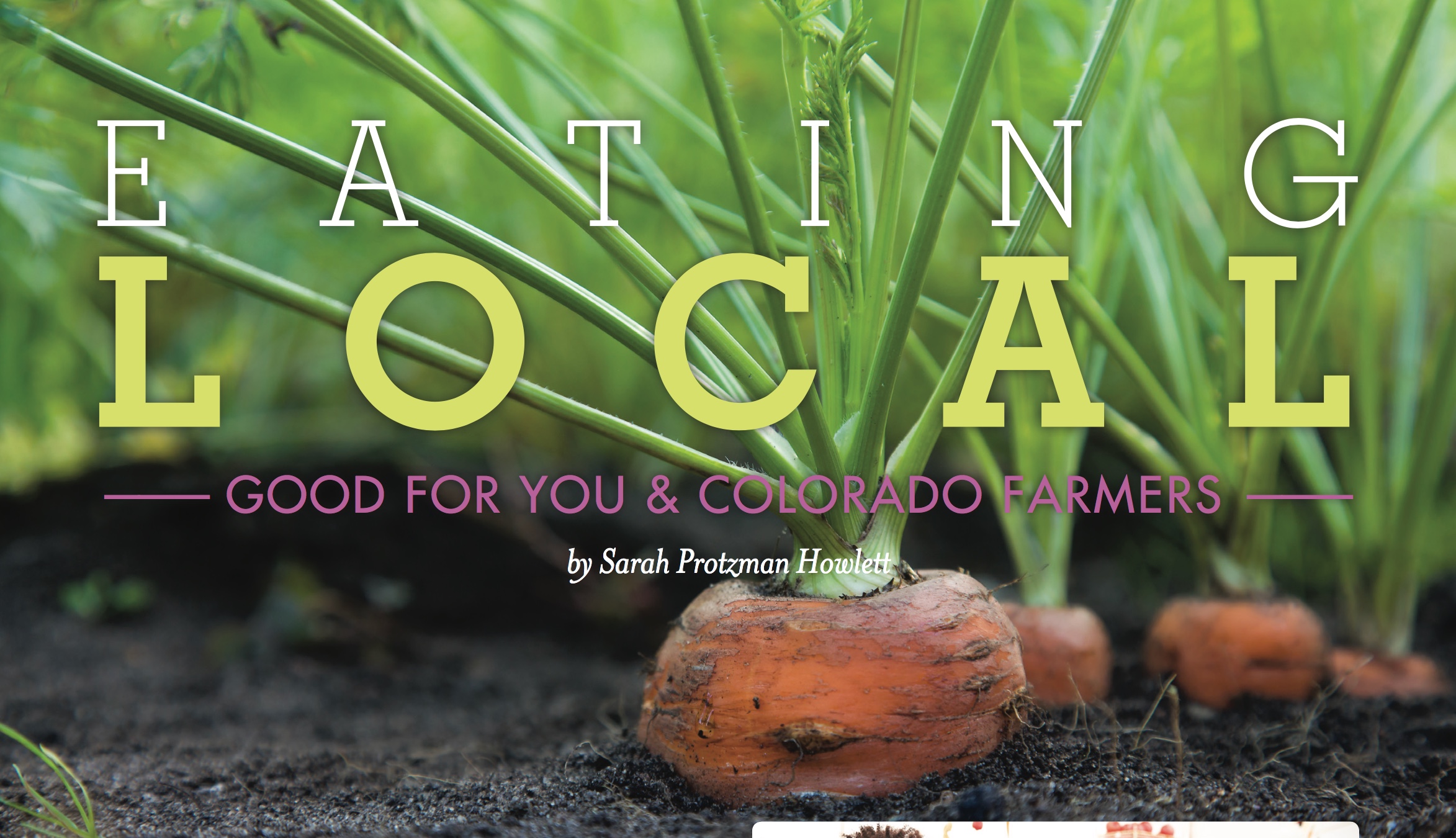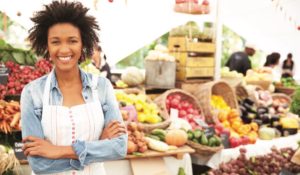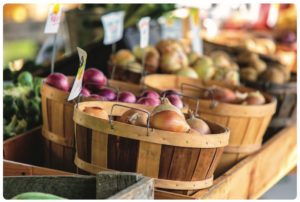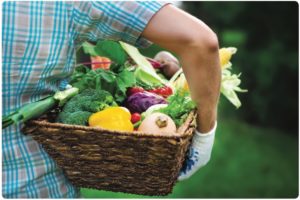Eating Local | by

Good for you and Colorado farmers
Asked to hazard a guess, many Coloradans may not know their state boasts a whopping 36,000 farms over a combined 32 million acres. From Olathe corn and Palisade peaches to greens and mushrooms, we’re spoiled—despite the fact our growing season, typically the end of April through the end of September, runs shorter than other agriculturally fortunate states.

“A bunch of [community-supported agriculture] and urban food production really took off in the Denver area around 2009,” says Meg Caley, director of farming operations and education at Sprout City Farms.
This uptick has only been bolstered by the passage of the Food Producing Animals Ordinance in 2011—allowing people to keep things like bees, chickens and dwarf dairy goats—and the Cottage Food Act in 2012, allowing non-licensed food producers to sell their wares.
Benefits of Eating Local
When Coloradans buy locally produced food, they’re not only given the chance to ask questions of the farmer who grew those lettuces, but they’re also helping keep more than 173,000 farming jobs in the state and contributing more than $40 billion annually to our state’s economy.
In January of this year, the Colorado Department of Agriculture released results from its survey on public attitudes toward agriculture, in which almost 85 percent agreed supporting local food systems is important.
Dan Goldhamer, horticulture agent at CSU Extension in Denver, encourages local-food enthusiasts to shop for “most of their salad bowl” in Colorado. “We can grow most things here in the Denver area,” he says. “Talk to your farmers at the market and ask them where they are from, how do they grow. Don’t be afraid to ask questions and have a conversation.”
But you don’t have to go to the farmers markets to buy local, Goldhamer says. Look for the Colorado Proud logo at your neighborhood grocery stores, and if you’re after something specific, the Colorado Proud website lists where to buy those products by county.
Making the CSA Leap

Goldhamer has been a member of CSAs for more than a decade, and Chatfield’s for three. He says Chatfield, unlike other markets, has a dedicated CSA field and growers who ensure CSA members are getting the best produce, “instead of bringing the best produce to farmers markets and giving us the leftovers.”
If you’re thinking about signing your family up, Caley says it’s okay not to know exactly what you’re doing. “We have people contacting us directly all the time and just asking what the right size is for them,” she says. “I ask them how often they cook, if they eat a lot of meat, or if they are vegetarian.” By comparison, Caley says the shares at Sprout City Farms are smaller and slightly less expensive ($20 to $25 per week for two to three people) “so as not to overwhelm people, cause waste and induce guilt.”
Indeed, this setup isn’t ideal for every household. Goldhamer cautions that a CSA share may not be right for those who travel frequently, are picky eaters or don’t like to cook. Some CSAs are great at growing specific crops, though, so if you are looking for something in particular, find a CSA that grows lots of what you want to eat.
The leap of faith is another deterrent, he says, and members should know that “by joining a CSA, you are sharing in the risk with farmer.” Those who feel uneasy knowing some crops may not fare well may want to stick to shopping at the farmers markets, which is still a fantastic option, Goldhamer says.
And then there’s the sticker shock in the spring. Putting down $400 to $500 for a farm share, Caley says, can be unsettling, but keep in mind this money is how the farm gets going. And when it comes to your bounty, patience is a virtue.
Goldhamer echoes the advice to start with a small share and see how you like it. “Part of the fun is trying new vegetables and figuring out what to do with what you got,” he says. “In order not to waste food, we usually do a big veggie and egg scramble on the weekends.”
Know Where It Grows

Michael Nail, co-owner of a local mushroom farm called Mile High Fungi, is one of many growers who keep a close watch on their product and who sells it. “We want to remain a boutique production and want to set a cap on our production,” Nail says. “We don’t want a bunch of middle men handling our product. We hustle. We farm it, we sell it, we deliver it. The end goal is to keep it that way.”
The best way to know who grew what is to just ask: “Did you grow this? Is this from your farm?” Caley says. The Boulder County Farmers Markets’ Union Station farmers market is among the producer-only markets in Denver.
Start your local-food adventure with these online resources:
- Local Harvest: A national directory of family farms, farmers markets, restaurants and grocery stores that feature local food
- FarmShares.info: A collection of information about CSAs
- Colorado Farm Fresh Directory: The Colorado Department of Agriculture’s guide to farmers markets and roadside stands
Leave a Comment
Please be respectful while leaving comments. All comments are subject to removal by the moderator.
